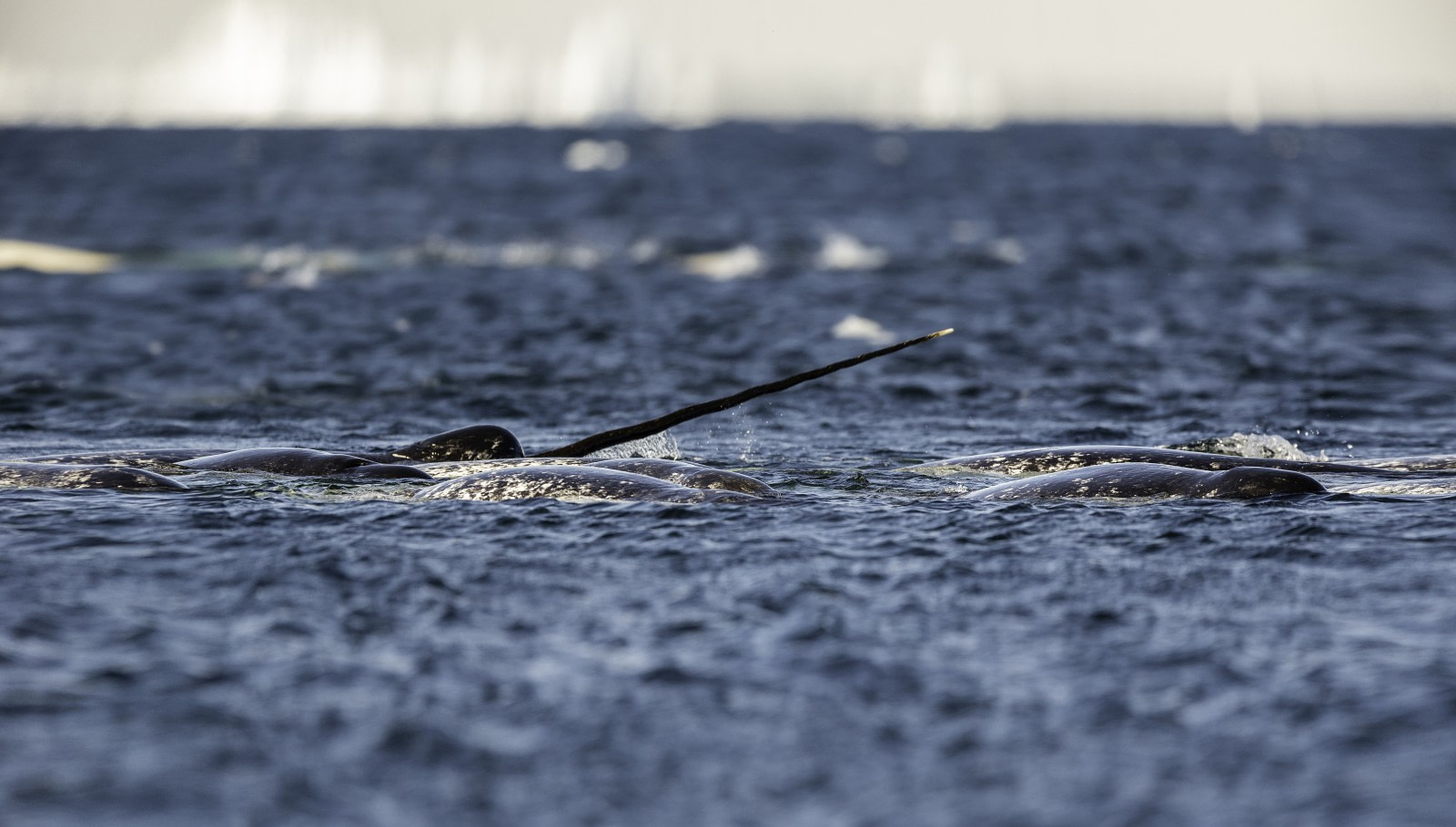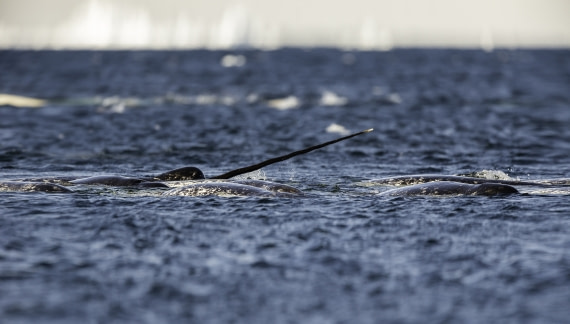Name: Narwhal, Narwhale (Monodon monoceros)
Length: 4 to 5.5 metres (excluding tusk). The males’ tusks can grow from 1.5 to 3 metres in length.
Weight: 800 to 1,600 kg, males being larger.
Location: Arctic.
Conservation status: Near Threatened.
Diet: Fish, shrimp, cuttlefish, squid.
Appearance: Grey, mottled. No dorsal fin. Male Narwhal have a single long tusk (sometimes two).
How do Narwhals feed?
During the winter Narwhals stay in shallower bay areas to feed almost exclusively on benthic fish, which are fish that live at the very bottom of a body of water (in this case, the bottom of the bays). During the Arctic summers they’ll move into open ocean water so their menu increases to include other kinds of fish like cod and halibut. Narwhals dive as deep as 1,500 metres while fishing, staying underwater for up to 25 minutes. These dives, some of the deepest ever recorded for mammals, can be repeated up to 15 times a day. Since Narwhals don’t have well-developed teeth in their mouths they are thought to suck their prey in and swallow it whole.
Are Narwhals social?
Narwhals form different types of groups, ranging anywhere from 5 to 20 individuals. Some groups are of mothers and their young, others include bull males. During the summers these smaller groups may merge to form larger groups than can include 500 to over 1,000 whales.
How fast do Narwhals swim?
Narwhals have been known to swim up to 160 km per day while migrating. This averages out to about 6.5 km per hour.
What are Narwhal birthing rituals like?
Narwhal males become sexually mature around 12 years old, while females reach maturity much earlier at around 7 years old. The females will give birth once every three years on average. Mating season begins from April through May. Once impregnated, the gestation takes about 14 months, meaning the female does not give birth until around June of the following year. Only one calf is born. The calves are about 1.5 metres in length, with dark grey skin that will lighten as they get older. The calves will nurse on their mother’s fat-rich milk for the next 20 months.
How long do Narwhals live?
Narwhals live up to 50 years in the wild.
How many Narwhals are there today?
There are about 75,000 Narwhals alive today.
Do Narwhals have any natural predators?
Younger Narwhals are targeted by Polar Bears who wait near breathing holes found in sheets of ice. Narwhals are also prey to Killer Whales. Narwhals are also susceptible to getting trapped under the ice, especially if they wait too long to migrate before the Arctic winter closes off large stretches of water.
7 Wonderful Narwhal Facts
- The Narwhal’s closest relative is the Beluga Whale, both belonging to the Monodontidae family.
- The Narwhal’s famous unicorn-like horn or tusk is in fact a canine tooth.
- Unlike most other whales and dolphins the Narwhal’s neck is jointed, not rigid or fused, meaning it can move its head around separately from its body.
- The name “Narwhal” comes from the Old Norse word nár which means “corpse”, referring to the mottled grey appearance of the whale which resembles that of drowned sailors.
- The scientific name Monodon Monoceros comes from Greek words meaning “one-tooth one-horn”.
- There is some possible evidence that Narwhals and Belugas occasionally mate.
- The horn or tusk is a sensory organ. Seawater enters a number of minute channels in the horn and then is channeled to a “taste” centre towards the base of the tusk. From there nerve endings send signals to the Narwhal’s brain, giving it chemical information about the waters surrounding it. In this way the Narwhal “tastes” its environment to discover food, the presence of mating-ready females, etc.




